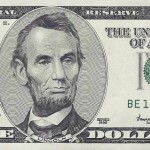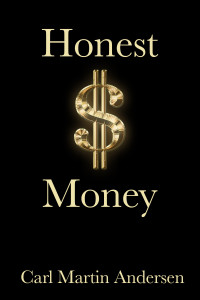Below is an excerpt from my best-selling book, “Honest Money” and is a subject I feel is very important to understand. Please have a look and see if you don’t agree.
The First Bank
Back in the Middle Ages, they didn’t have banks. People either carried their money with them or else hid it in their houses. Some people who wanted more security for their personal wealth sought out a safe place to keep it, but the only people who had vaults or safes were goldsmiths because they naturally had a supply of gold and needed to keep it safe from robbers and thieves.
Goldsmiths started storing other people’s gold for a fee. People would pay them a certain amount per month or year for storing their gold in the vault. The goldsmith would issue a paper receipt, stamped with his personal seal, for the specific items or amount of gold on deposit with him. This was the first use of what became known in the bullion business as a “warehouse receipt.”
When people wanted to spend their gold, they would take the warehouse receipt to the goldsmith, claim their gold, and hand their coins over in exchange for their purchase or to complete their business transaction. Eventually, it became more convenient to just hand over the receipt to the merchant instead, the buyer perhaps signing his or her name to it transferring ownership to the merchant. This saved a lot of time and effort since people didn’t have to go to the goldsmith to spend their gold.
As this practice grew, certain goldsmiths became well-known and earned reputations for being trustworthy. Their warehouse receipts were recognized and more easily exchanged (spent). It became commonplace to exchange these warehouse receipts for other commodities, while the gold itself remained safe in the goldsmiths’ vaults.
On a fateful day for humanity, one of these enterprising goldsmiths (whose name is lost to history, but I’m guessing it was “Warburg.”) woke up in the middle of the night and realized that he had so much gold on deposit and so many warehouse receipts in circulation that nobody except him knew exactly how much there was. At the same moment he realized that it was very unlikely all his customers were going to come to his shop and demand their gold at the same time, so if he were to make up a receipt for gold that he didn’t have—gold that did not exist—nobody would know!
With that idea fresh in his mind, he got out of bed, went to his desk, and made up a nice new warehouse receipt for gold that he didn’t have. After a nutritious breakfast, he went down to the local Chevrolet Dealership and traded that (fake) warehouse receipt for a brand-new split-window Corvette Convertible in candy apple red.
OK, maybe it was a horse and buggy or a piece of land or something, but you get the idea.
And that, ladies and gentlemen, is the first instance of the use of what John Maynard Keynes came to call “fractional reserve banking.” In other words, the goldsmith only had a fraction of the gold in his vault for which he had issued receipts. No one knew how much gold he had in his vault except him.
Since he had liberally loaned his made-up warehouse receipts to his king, the king was unwilling to audit the goldsmith’s vault to prove that everyone’s gold was actually there, despite the many “Audit the Goldsmith” campaigns instigated by his customers.
Flashing forward well into the future, we have a very similar system. We use what are known as “Federal Reserve Notes” (FRNs), which are issued by the Federal Reserve Bank. They have no intrinsic value, they are decidedly not backed by gold or silver, and (most importantly) the Federal Reserve Bank is not part of the US Government.
Oh yes, they play great theater in having the President of the United States appoint and the Senate confirm the appointment of the “Chairman of the Board of Governors of the Federal Reserve System” (Wow! Doesn’t that sound official?) so they can pretend it’s a government agency, but it is not.
The Federal Reserve is a privately owned bank, and you would be surprised to learn who the actual owners are. Do your own due diligence (DYODD) and research if you’re interested.
If you don’t believe that the Fed is privately-owned, look up the phone number of any of the regional Federal Reserve Banks, call them, and ask the receptionist, “Is the Federal Reserve System a government agency?” They do a lot of pretending and insinuating on the public stage, but if you ask them directly, they will tell you the truth.
To make it clear, the US Treasury has the authority to issue money itself. It does not need a private bank to do it. When the treasury creates the notes, we (the USA) don’t owe anything to anybody. The government can spend them into circulation however it wishes.
In our system, we’ve given a special license to a private bank to “issue” their own form of “money” which we (The USA) then BORROW and have to repay WITH INTEREST.
Yes. That’s it. The Federal Deficit is made up for one simple reason: To make even more wealthy the wealthy people who own the Federal Reserve System.
What’s truly amazing is that this doesn’t seem to bother most people, even when they begin to understand it. I refer the reader to a quote from Henry Ford:



Leave a Reply
You must be logged in to post a comment.